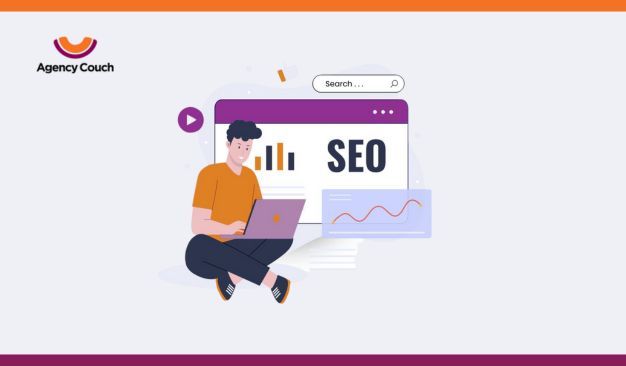Your company’s website is frequently the initial point of contact between your company and prospective clients. Like a physical store, your primary digital property needs regular upkeep and changes to remain current and appealing. Are you thinking if it’s time to redesign your website since it’s been around for a while? Look out for these signs that your website might be ready for a change.
1. Old Design
Your website’s design is similar to clothing that speaks a lot about your company. A style that is too old can make your site look sloppy and outdated. If your website appears to be trapped in the early 2000s, it’s time for an update.
A modern design is about more than simply looks; it is also about functionality. New design trends are frequently accompanied with enhanced user experiences and streamlined navigation, making it simpler for your visitors to locate what they’re searching for. A new design may offer your website a modern edge while also conveying a feeling of reliability.
2. Slow Load Time
Nobody has time for a slow-loading website in today’s fast-paced environment. Visitors will press the return button and hunt for speedier options if your site takes too long to load. A website redesign can increase your site’s speed and load times.
When your website takes too long to load, it not only bothers visitors but also lowers your search engine rating. Search engines analyse site speed when ranking search results, therefore a sluggish website may result in reduced visibility. Compressing images, utilising browser cache, and adopting other approaches to improve load speeds can all be part of a website redesign.
3. Incompatibility With Mobile Devices
With mobile devices increasingly being used to access the internet, having a mobile-friendly website is no longer optional. If your website does not adjust to multiple screen sizes and devices, you are losing quite a bit of your traffic.
A responsive design guarantees that your website appears and performs properly on all platforms, including desktop displays, smartphones, and tablets. This versatility is essential for both the user experience and SEO. Furthermore, google employs mobile friendliness as a ranking element, so a mobile-friendly redesign might help you rank higher in search engines.
4. Inadequate User Experience (UX)
Visitors should have a pleasant and smooth experience when they visit your website. If consumers have difficulty navigating your site or finding the information they require, this is a clear sign that your site’s user experience (UX) needs to be improved.
A website redesign with a UX focus may improve usability by making it quicker and user-friendly. It entails enhancing navigation, increasing information structure, and generating logical user routes. A great user experience may lead to improved engagement, more time spent on your site, and higher conversion rates.
5. Inadequate Conversion Rates
A website that fails to convert visitors into customers, subscribers, or leads is missing an important component. If your conversion rates are low, a redesign might help you rethink your call-to-action content, and overall approach.
CRO (conversion rate optimization) is an important part of web design. You may spot obstacles in the conversion funnel and make strategic adjustments by studying your website’s performance and understanding user behaviour. A website redesign allows you to make these adjustments, such as increasing the visibility and effectiveness of your CTAs or improving your checkout experience.
6. Excessive Bounce Rate
A high bounce rate indicates that visitors are quickly abandoning your site without interacting. If your website isn’t effectively engaging visitors, it’s essential to reconsider your design and content in order to catch and maintain their interest.
A high bounce rate on a website may suggest a mismatch between visitor expectations and the material they find. It might be due to poor design, confusing messages, or delayed loading times. By redesigning your website, you may solve these concerns while also creating a more engaging and attractive online presence.
7. Inefficient Branding
Your website should successfully express the identity and message of your business. If your branding is unclear or does not resonate with your target audience, it may be time to rebuild your website to coincide with your branding goals.
It takes more than a memorable logo and colour palette to create effective branding. It is all about communicating your brand’s beliefs, personality, and unique selling points. A well-branded website produces a consistent and solid picture of your company, which aids in the development of trust and recognition. If your branding may use some polishing, a website makeover could be the ideal occasion.
8. Inadequate SEO Performance
SEO (Search Engine Optimization) is critical for getting your website recognized on the internet. If your website isn’t ranking well in search engine results, a redesign with SEO best practices in mind can help.
Several SEO-related elements must be considered throughout a makeover. You’ll want to make sure your website is search engine friendly, with clean and crawlable code, optimised meta tags, and a logical sitemap. Furthermore, concentrating on content quality, keyword optimization, and mobile-friendliness are important SEO components that a redesign may address.
9. Outdated Information
The heart of your website’s engagement and worth is its content. If your website has outdated or irrelevant material, it might undermine your trust and drive people away. To keep your audience interested and informed, a redesign may involve content updates and rearrangement.
Regularly updating your website with new, interesting material is beneficial not just to users but also to search engines. Websites that give useful and up-to-date content are rewarded by search engines. During a redesign, a review of the content may assist find irrelevant information, allowing you to refresh or replace it with new, relevant material.
10. Security Concerns
Website security is of the utmost importance. If your website is susceptible to vulnerabilities and attacks, it’s an indication that it needs to be redesigned in order to include stronger security measures and secure your data and visitors.
In an age where cyber dangers are common, keeping strong security measures is critical. A website redesign might include security measures such as the use of SSL certificates, frequent security upgrades, and safe coding techniques. You can protect your website and visitors from potential data breaches by emphasising security in your redesign.
Agency Couch: Your Reliable Design Partner
Finally, your website is a living thing that should adapt to your audience’s evolving demands and expectations. If you’ve seen one or more of these indicators, it’s a sure sign that a website redesign is in order to improve its performance and general effectiveness. Don’t put off revitalising your online presence until your website becomes a digital antique; take action today.



